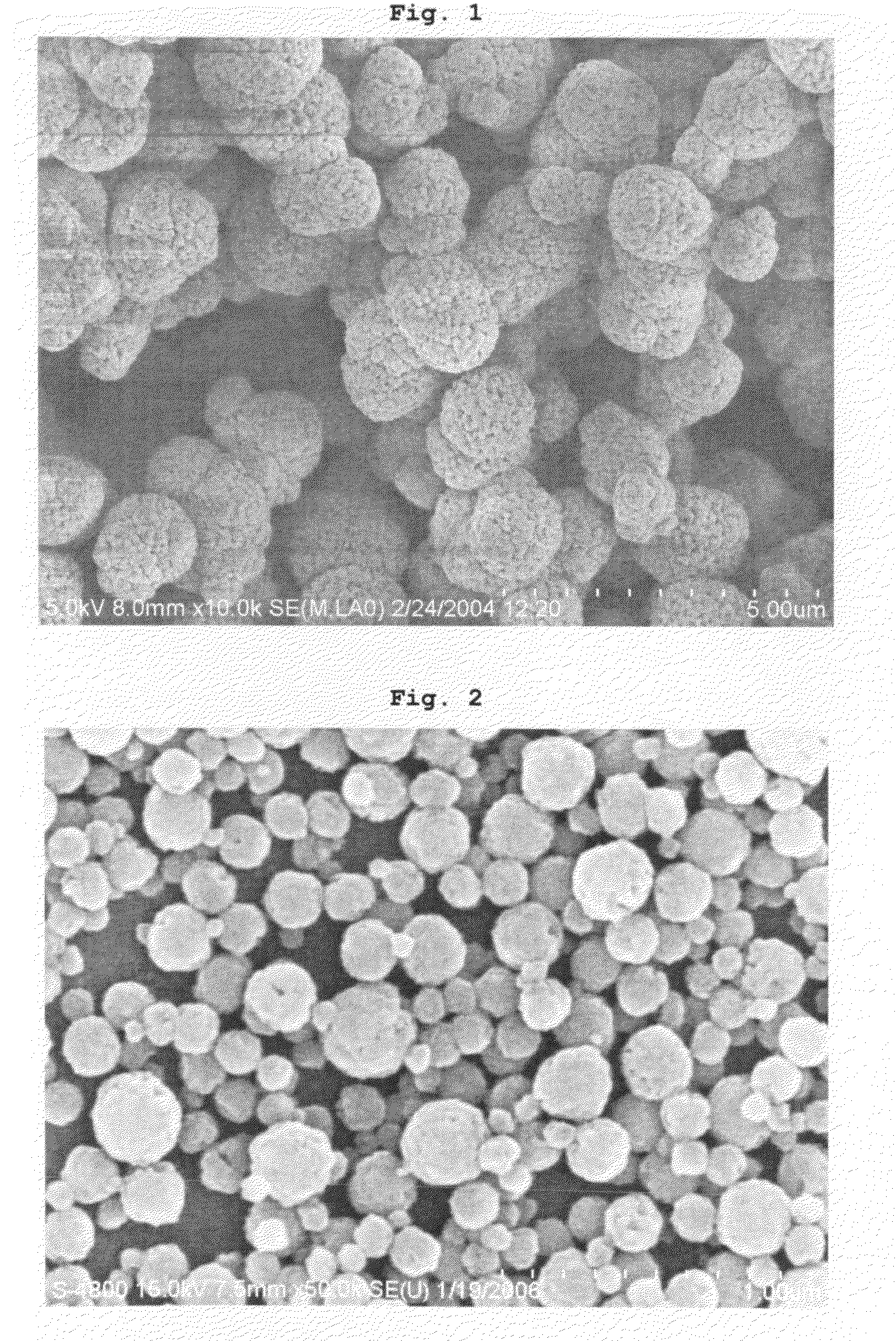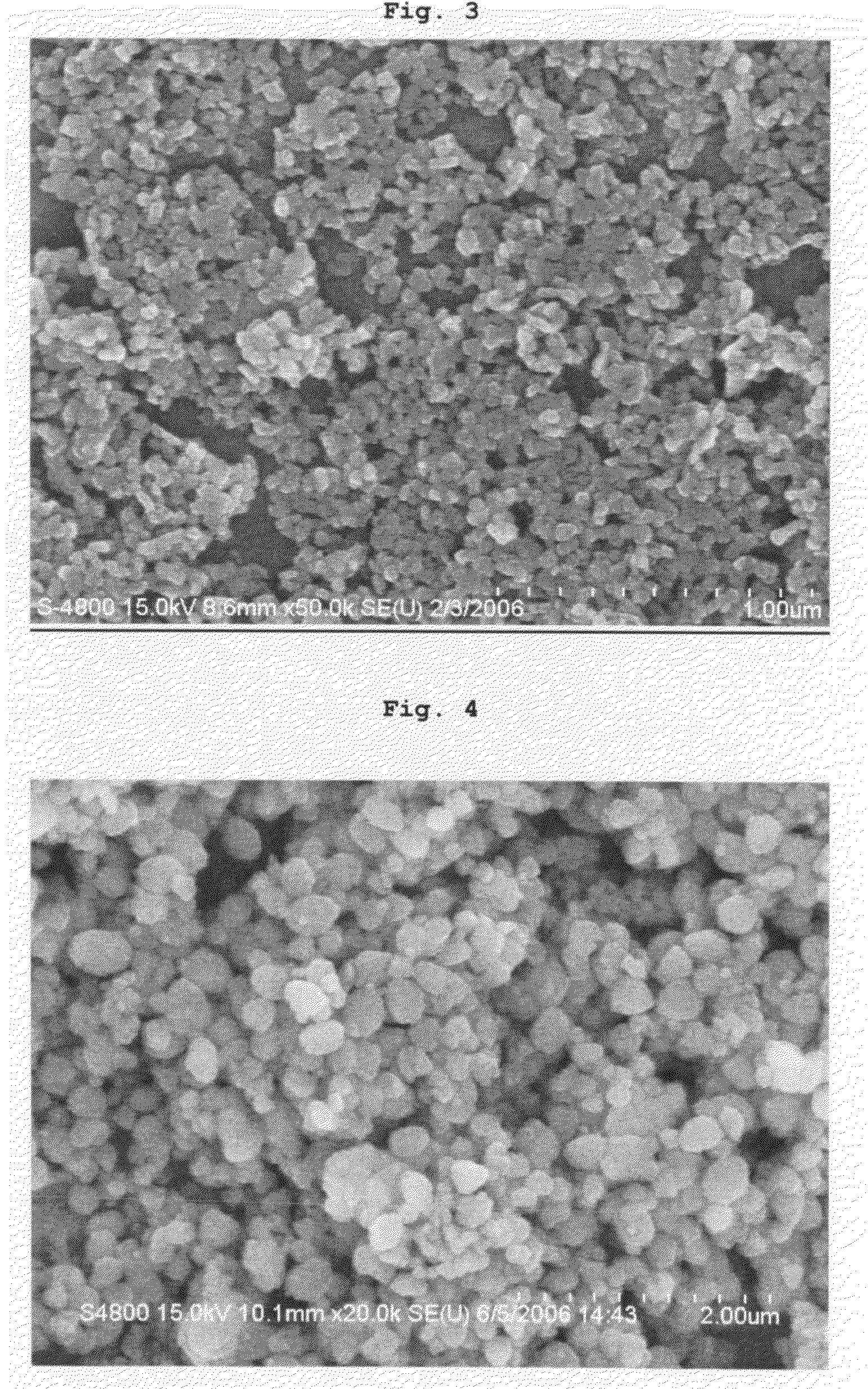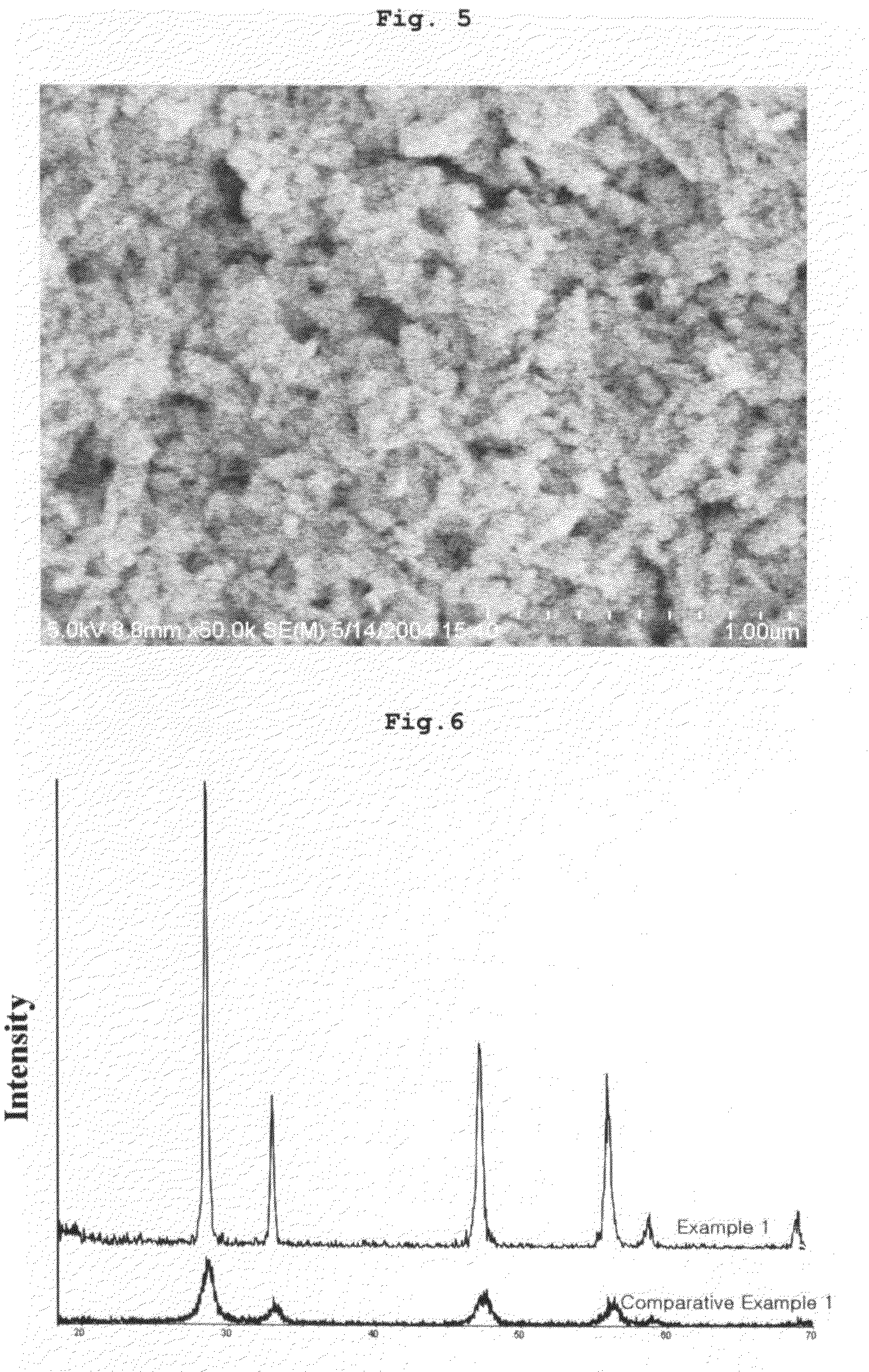Method for preparing cerium oxide powder using organic solvent and cmp slurry comprising the same
a cerium oxide and organic solvent technology, applied in the direction of lanthanide oxide/hydroxide, other chemical processes, cellulosic plastic layered products, etc., can solve the problems of difficult control of particle size and dispersibility, and the difficulty of industrially utilizing cerium oxide powder, etc., to prevent the occurrence of micro scratches, improve the polishing rate, and increase the contact area
- Summary
- Abstract
- Description
- Claims
- Application Information
AI Technical Summary
Benefits of technology
Problems solved by technology
Method used
Image
Examples
example 1
[0058]A first solution was prepared in a vessel by dissolving 0.2 mol of cerium nitrate into a solvent comprising a mixture of 100 ml of ethylene glycol (dielectric constant at 20° C.: 41.4, boiling point: 197° C.) and 400 ml of ethanol (dielectric constant at 20° C.: 25.3, boiling point: 78.3° C.) at room temperature, a second solution was prepared in another vessel by dissolving 0.6 mol of KOH into a solvent comprising a mixture of 100 ml of ethylene glycol and 400 ml of ethanol at room temperature, and then the two solutions were mixed with each other and retained at a temperature of 50° C. The mixed solutions were stirred while 0.76 g of hydrogen peroxide (about 30%) was dripped into them to cause precipitation for 24 hours. In this way, yellowish-brown powder was obtained.
[0059]XRD analysis confirmed that the resultant powder has the cubic structure of cerium oxide, particle size analysis showed that the powder has an average particle size of 1 to 3 μm, and BET measurement show...
example 2
[0060]Brown powder was obtained in the same manner as described in Example 1, except that a solvent comprising a mixture of 400 ml of ethylene glycol and 100 ml of ethanol was used as a solvent for the first and second solutions, instead of the solvent comprising a mixture of 100 ml of ethylene glycol and 400 ml of ethanol, and the precipitation was performed at a temperature of 120° C., instead of 50° C.
[0061]XRD analysis confirmed that the resultant powder has the cubic structure of cerium oxide, particle size analysis showed that the powder has an average particle size of 100 to 300 nm, and BET measurement showed that the powder has a specific surface area of 113 m2 / g.
example 3
[0062]Yellowish-brown powder was obtained in the same manner as described in Example 1, except that oxygen (O2) gas was introduced into the mixed solutions at a flow rate of 0.3 cm3 / min during the precipitation, instead of dripping the hydrogen peroxide into them.
[0063]XRD analysis confirmed that the resultant powder has the cubic structure of cerium oxide, particle size analysis showed that the powder has an average particle size of 50 to 100 nm, and BET measurement showed that the powder has a specific surface area of 52 m2 / g.
PUM
| Property | Measurement | Unit |
|---|---|---|
| Temperature | aaaaa | aaaaa |
| Temperature | aaaaa | aaaaa |
| Fraction | aaaaa | aaaaa |
Abstract
Description
Claims
Application Information
 Login to View More
Login to View More - R&D
- Intellectual Property
- Life Sciences
- Materials
- Tech Scout
- Unparalleled Data Quality
- Higher Quality Content
- 60% Fewer Hallucinations
Browse by: Latest US Patents, China's latest patents, Technical Efficacy Thesaurus, Application Domain, Technology Topic, Popular Technical Reports.
© 2025 PatSnap. All rights reserved.Legal|Privacy policy|Modern Slavery Act Transparency Statement|Sitemap|About US| Contact US: help@patsnap.com



